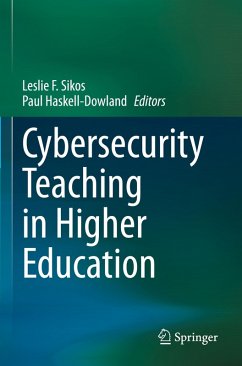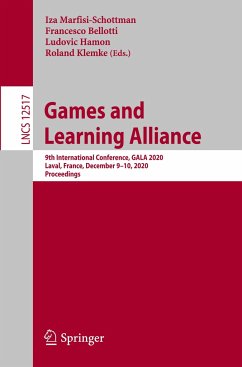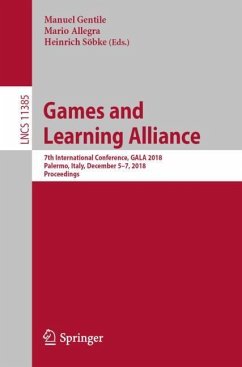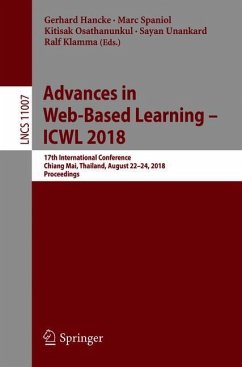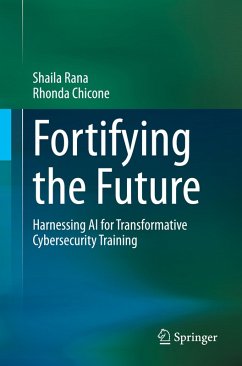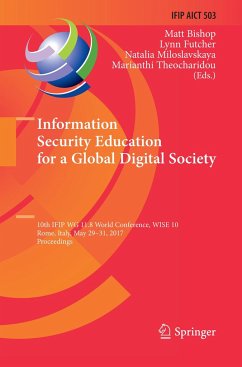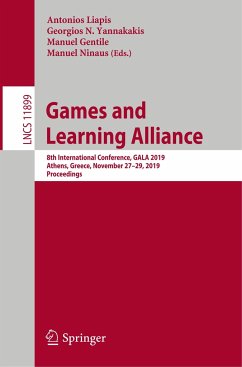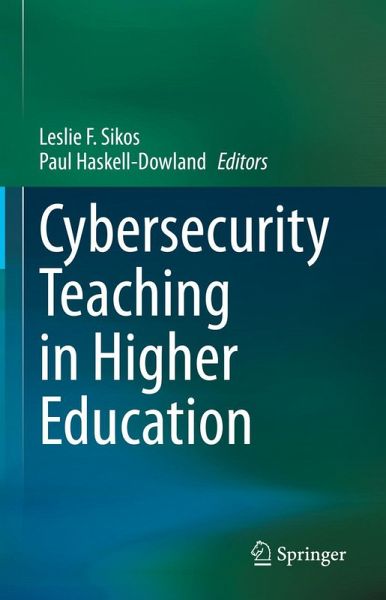
Cybersecurity Teaching in Higher Education

PAYBACK Punkte
57 °P sammeln!
This book collects state-of-the-art curriculum development considerations, training methods, techniques, and best practices, as well as cybersecurity lab requirements and aspects to take into account when setting up new labs, all based on hands-on experience in teaching cybersecurity in higher education.In parallel with the increasing number and impact of cyberattacks, there is a growing demand for cybersecurity courses in higher education. More and more educational institutions offer cybersecurity courses, which come with unique and constantly evolving challenges not known in other discipline...
This book collects state-of-the-art curriculum development considerations, training methods, techniques, and best practices, as well as cybersecurity lab requirements and aspects to take into account when setting up new labs, all based on hands-on experience in teaching cybersecurity in higher education.In parallel with the increasing number and impact of cyberattacks, there is a growing demand for cybersecurity courses in higher education. More and more educational institutions offer cybersecurity courses, which come with unique and constantly evolving challenges not known in other disciplines. For example, step-by-step guides may not work for some of the students if the configuration of a computing environment is not identical or similar enough to the one the workshop material is based on, which can be a huge problem for blended and online delivery modes. Using nested virtualization in a cloud infrastructure might not be authentic for all kinds of exercises, because some of itscharacteristics can be vastly different from an enterprise network environment that would be the most important to demonstrate to students. The availability of cybersecurity datasets for training and educational purposes can be limited, and the publicly available datasets might not suit a large share of training materials, because they are often excessively documented, but not only by authoritative websites, which render these inappropriate for assignments and can be misleading for online students following training workshops and looking for online resources about datasets such as the Boss of the SOC (BOTS) datasets. The constant changes of Kali Linux make it necessary to regularly update training materials, because commands might not run the same way they did a couple of months ago.
The many challenges of cybersecurity education are further complicated by the continuous evolution of networking and cloud computing, hardware and software, which shapes student expectations: whatis acceptable and respected today might be obsolete or even laughable tomorrow.
The many challenges of cybersecurity education are further complicated by the continuous evolution of networking and cloud computing, hardware and software, which shapes student expectations: whatis acceptable and respected today might be obsolete or even laughable tomorrow.





